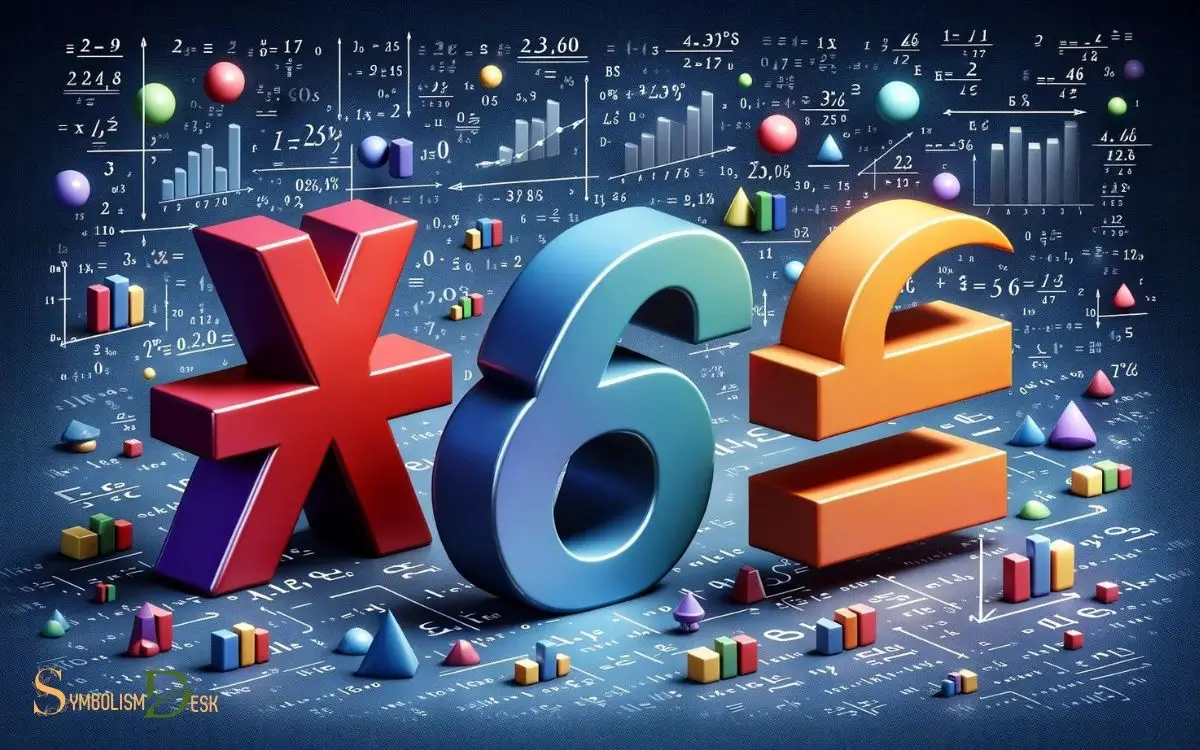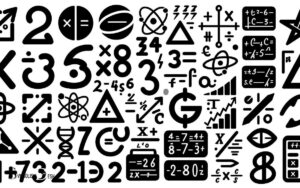What Is a Comparison Symbol in Math? Greater Than!
A comparison symbol in math is a symbol used to compare the relative values of two numbers or expressions, indicating whether one is greater than, less than, or equal to the other.
Comparison symbols are fundamental tools in mathematics that allow us to evaluate the relationship between quantities.
The most common comparison symbols are:
For example, if we have 5 > 3, it means that 5 is greater than 3. Comparison symbols are the bedrock of mathematical inequalities, serving as the foundational language for expressing the size relationship between numbers.

Key Takeaway
Importance of Comparison Symbols
The importance of comparison symbols in math becomes evident when analyzing relationships between quantities and making informed comparisons based on their values.
These symbols, such as “<” (less than), “>” (greater than), and “=” (equal to), are essential for expressing the relative magnitude of numbers or variables.
They play a crucial role in formulating inequalities and equations, enabling us to represent and solve real-world problems, such as finding the best deal when shopping or determining the fastest route for a journey.
Comparison symbols also facilitate the understanding of mathematical concepts like number ordering, ratio relationships, and proportional reasoning.
Without these symbols, it would be challenging to convey the nuances of numerical relationships and make meaningful comparisons, highlighting their significance in mathematical discourse and problem-solving.
Commonly Used Comparison Symbols
Discussing ‘Commonly Used Comparison Symbols’ moves the focus to the specific symbols that denote relationships between quantities in mathematical expressions.
The most familiar comparison symbols include the greater than (>), less than (<), greater than or equal to (≥), and less than or equal to (≤) symbols.
The greater than symbol (>) is used to indicate that one quantity is larger than another, while the less than symbol (<) signifies that one quantity is smaller than another.
The greater than or equal to symbol (≥) denotes that a quantity is either greater than or equal to another, and the less than or equal to symbol (≤) indicates that a quantity is either less than or equal to another.
Understanding these symbols is crucial for interpreting mathematical relationships and making comparisons between different quantities. For example, the greater than and less than symbols (<, >) are essential for understanding inequalities, while the equal sign (=) is crucial for indicating the equivalence of quantities. Additionally, the meaning of infinity symbol (∞) is important for understanding the concept of unlimited and unbounded quantities in mathematics. The infinity symbol represents a value that is larger than any assignable quantity, and it plays a significant role in calculus, limits, and other advanced mathematical concepts.
Interpreting Comparison Symbols
An essential aspect of mathematical analysis involves interpreting comparison symbols to discern relationships between quantities. When interpreting comparison symbols, it’s crucial to consider the context in which they are used.
Here are two important points to keep in mind:
- Understanding Relative Magnitudes: Comparison symbols like > (greater than) and < (less than) help us understand the relative magnitudes of numbers. For instance, 5 > 3 indicates that 5 is greater than 3.
- Direction of Inequality: The direction of the symbol is significant. A < b indicates that a is less than b, while a > b means that a is greater than b.
These concepts form the foundation for comparing and analyzing numerical values, allowing for a deeper understanding of mathematical relationships.
Solving Equations With Comparison Symbols
Solving equations involving comparison symbols requires a thorough understanding of mathematical relationships and operations. Whether it’s inequalities (<, >) or equalities (≤, ≥), the key is to treat them just like regular equations.
The goal is to isolate the variable on one side of the equation to determine its value. When multiplying or dividing by a negative number, the inequality sign must be flipped, maintaining the correct direction of the inequality.
For example, when solving 2x + 5 > 11, the first step is to subtract 5 from both sides to get 2x > 6, then divide by 2 to find x > 3. This process is crucial for solving real-world problems and making informed decisions based on numerical relationships.
Real-Life Applications of Comparison Symbols
Real-Life Applications of Comparison Symbols can be seen in various scenarios where mathematical relationships are utilized to make informed decisions or analyze numerical data.
Financial Planning
- Budgeting: Using comparison symbols to compare income to expenses and make financial decisions.
- Investment Analysis: Comparing different investment options based on their returns using mathematical symbols.
Comparison symbols are also applied in:
Healthcare –
- Medical Research: Analyzing and comparing the effectiveness of different treatments or medications using statistical symbols.
- Public Health: Comparing data to make informed decisions about disease prevention and healthcare resource allocation.
Conclusion
Comparison symbols in math are essential tools for expressing relationships between numbers or quantities. From simple comparisons to complex equations, these symbols are used widely in various mathematical concepts and real-world applications.
Without comparison symbols, the language of mathematics would be incomplete, making it difficult to communicate and solve problems.
In essence, comparison symbols are the lifeblood of mathematical expressions, serving as the foundation for all mathematical operations.






